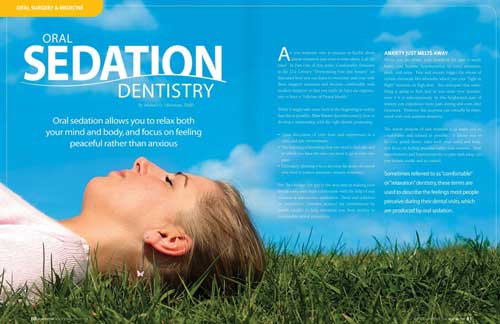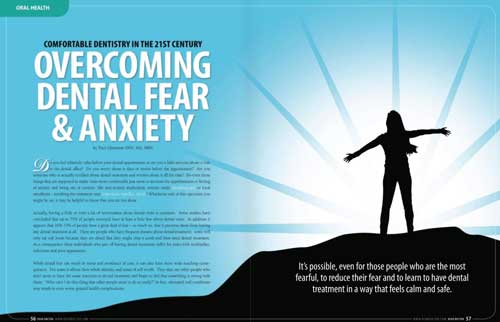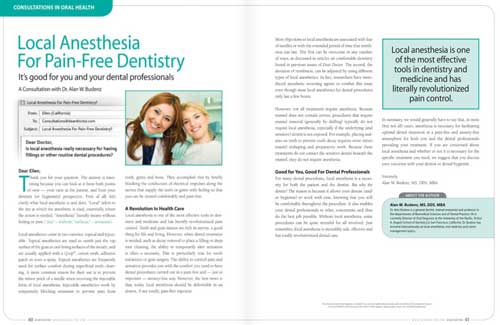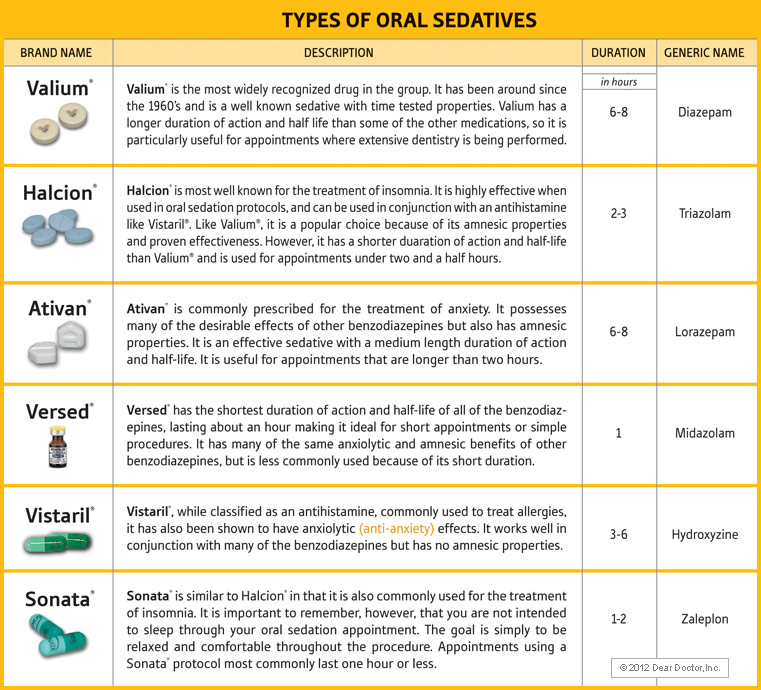Sedation Dentistry
Dental Office in London, ON – Northland Dental Centre
Sedation Dentistry
There’s so much dentistry can do these days to make your mouth healthier and your smile more beautiful. Yet many people don’t take advantage of this because of a long-standing fear of dental treatment. If you are one of these people, rest assured that it’s possible to have an experience that’s free of anxiety and pain. This can be accomplished through sedation dentistry in London, ON, by blocking your sensations of pain with local anesthetics or by giving you medication that can help you relax. Sometimes both are needed to ensure maximum comfort, especially if you are someone for whom the injections that deliver local anesthetics are themselves a major source of anxiety.

When you are afraid of dental treatment, your guard goes up and your pain threshold goes down; anticipating that something will hurt makes you hypersensitive to every sensation — even sound. If this describes your experience in the dental chair, then you might benefit from sedatives that can be given during your visit to make that anxiety melt away.
Before any particular sedative is recommended, you will be asked to provide your complete health history, including any medications you are currently taking — both prescription and over-the-counter. It is also important to know if you smoke or drink. On the day of your treatment, you may need to have someone drive you to and from your appointment as certain medications take time to wear off.
Ways to Relieve Anxiety
Oral Sedation — Oral sedation (given by mouth) is a popular option for many people precisely because it does not require the use of needles. Oral sedatives are either swallowed whole in pill form or can be dissolved under the tongue. Both methods work in a matter of minutes. A variety of oral sedative and anxiolytic (anxiety-dissolving) medications have been developed through extensive research and testing to make your experience of dental treatment as comfortable and relaxing as possible. All have long safety records after decades of use, and several even have “amnesic” properties, meaning you will remember little to nothing, even though you are conscious throughout the treatment. Commonly prescribed medications include Valium®, Halcion®, Sonata®, Ativan®, Vistaril®, and Versed®. To learn more, view our chart on Types of Oral Sedatives
Inhalation Conscious Sedation — Nitrous oxide, a sedative you inhale, has been used in dental offices for nearly 100 years. It is a relatively poor pain reliever but a very good anti-anxiety medication. It is administered through a nasal hood, which resembles a small cup that is placed over your nose. The oxygen mixed with nitrous oxide provides a light-headed or even euphoric feeling, which is quick to wear off so there is no “hangover” effect. All bodily functions remain essentially normal during the use of this sedative, which is very safe.

IV Conscious Sedation — Sedatives delivered directly into the bloodstream intravenously (into the vein) are more potent than when taken orally, and the amnesic effects may be more profound. Because IV sedation has an almost immediate effect on the body and its functions — including heart rate, blood pressure and breathing — there is a higher degree of risk associated with it than with other types of sedatives. There is also a higher level of training required for those who administer it. As with all sedation (except nitrous oxide), you must be monitored with specialized equipment throughout your IV sedation treatment. The main advantage is that drugs administered this way work immediately and the level of sedation can be adjusted more quickly and easily. And with most sedatives, you won’t remember a thing about your dental procedure after the sedative wears off.
Safe and Effective Sedation Dentistry for Painless Treatment
Sedation dentistry refers to the process of establishing a relaxed, calm state during a dental treatment through the use of sedatives, and is an ideal solution for fearful patients or extensive treatments that would otherwise require multiple appointments. Different sedatives vary in degrees of relaxation. Conscious sedation involves administering a sedative, such as nitrous oxide or light oral sedation, while the patient is alert and awake to reach a state of light relaxation.
For severe cases of dental phobia, it’s possible for a patient to undergo a major dental procedure and remember very little of it with the help of an anesthesiologist. The type of sedative a patient can receive will depend on the anesthesiologist’s discretion, the patient’s degree of anxiety and the extent of the procedure.
Sedation allows dentists to create a state of relaxation and manage the fear and pain patients may experience during dental procedures. Some of the different types of sedation dentistry include:
- Local anesthesia– administered by injecting medication into tissue or by applying a medication topically to an area to eliminate sensation.
- Minimal sedation– used most frequently in dentistry and usually involves taking medications orally. All bodily functions remain normal and the person is able to breathe on his or her own. The patient may respond normally to verbal commands and may experience some degree of amnesia about what happened during their dental appointment. Nitrous oxide or “laughing gas” may be used to achieve minimal sedation and in combination with a recommended dosage of oral medication.
- Moderate sedation– achieved by using medications that can be taken orally or intravenously. Patients who undergo moderate sedation are awake and respond to touch and/or verbal commands. All bodily functions remain normal, and the patient does not need assistance breathing.
- Deep sedation– can be achieved by injecting medication, giving oral medications, and in combination with gases. Patients who are deeply sedated are not easily woken up, but may respond to some stimulation. Patients may need some breathing assistance at deeper levels.
Benefits of Sedation Dentistry
Patients suffering from dental phobia are often hesitant to undergo long or complex dental procedures, as they aren’t sure whether they can withstand long periods of time in the dental chair. With sedation dentistry, however, patients can endure the smile makeover they’ve always wanted. This is due in part to the fact that sedatives make long procedures seem like only a few minutes, leaving the patient in a relaxed, and anxiety-free state while the dentist is free to perform the procedure with ease. Appointments that would generally require multiple visits can often be performed in just one due to the patients increased cooperation.
And since sedation dentistry helps reduce many fears experienced by anxious patients, patients are more likely to go to the dentist for routine care and other treatments once they understand the ease in which a treatment can be performed under the use of sedatives.
Related Articles

Oral Sedation Dentistry
Step out from under the shadow of fear and into the calm of sedation dentistry. There are safe and time-tested options available to ensure that you have a positive and painless dental experience. Your apprehension and hypersensitivity to pain melt away, yet you remain awake and in control… Read Article

Overcoming Dental Fear & Anxiety
Do you feel relatively calm before your dental appointment or are you a little nervous about a visit to the dental office? Do you worry about it days or weeks before the appointment? Are you actually terrified of it? Whichever end of this spectrum you might be on, you are not alone. It’s possible, even for those who are the most afraid, to reduce that fear and to learn to have treatment in a way that feels calm and safe. Here’s how… Read Article

Local Anesthesia for Pain-Free Dentistry
Local anesthesia is one of the most effective tools in dentistry and medicine. It is safe, effective and has totally revolutionized pain control. Without local anesthesia, some dental procedures would be quite stressful for all involved. It’s good for you and for your dental professionals… Read Article

